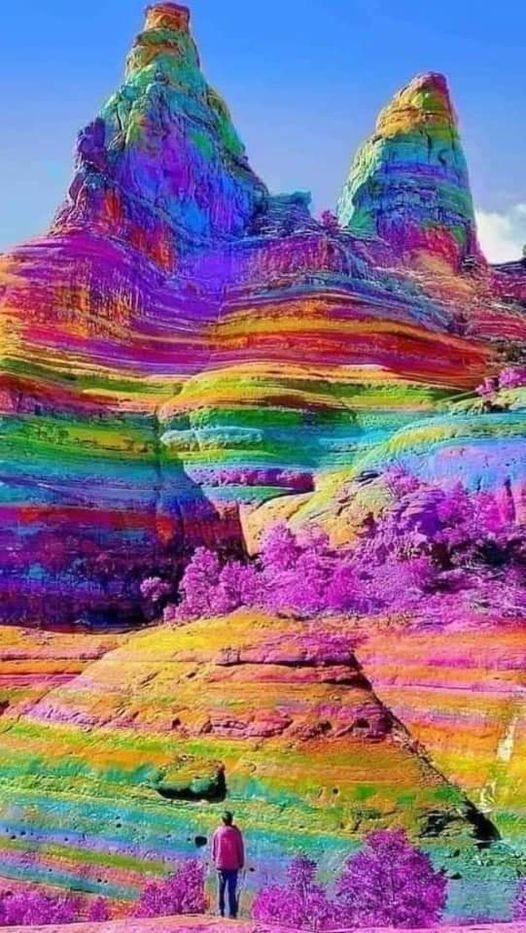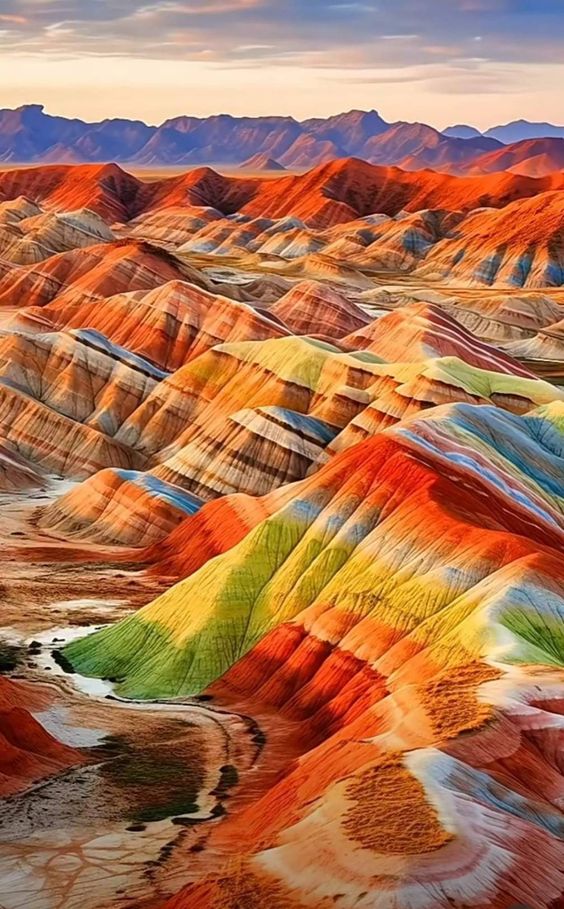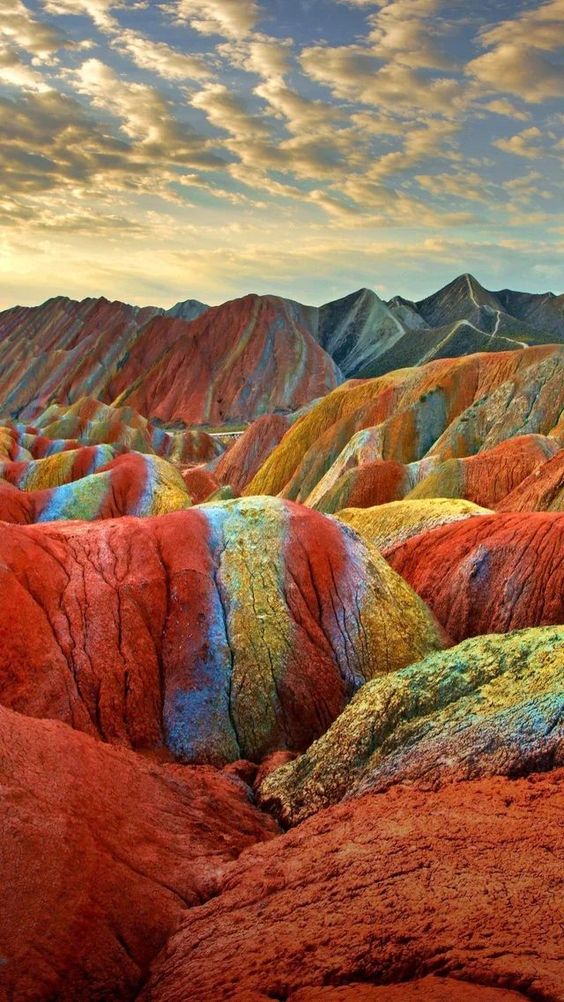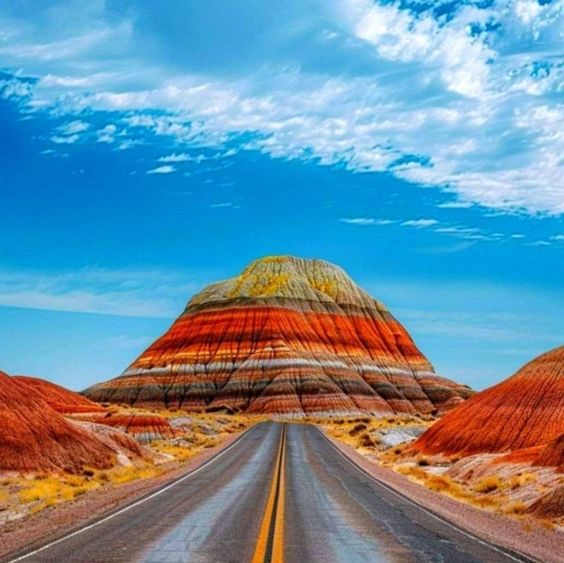The Rainbow Mountains, located in the Zhangye Danxia Landform Geological Park in Gansu Province, China, are a mesmerizing sight that captivates visitors from around the world. Known for their vibrant and surreal colors, these mountains resemble an artist’s canvas with their rich reds, oranges, yellows, greens, and blues streaking across the landscape. This natural phenomenon has earned the Rainbow Mountains a place on the UNESCO World Heritage list and recognition as one of the most visually stunning places on Earth. Let’s explore the formation, beauty, and significance of these unique geological formations.

How the Rainbow Mountains Were Formed
The vivid colors of the Rainbow Mountains are a result of millions of years of natural geological processes. These formations are primarily composed of sandstone and other minerals that settled in layers over 24 million years. During this time, the layers of sediment were compressed and hardened. Over the centuries, tectonic activity uplifted these layers, creating mountainous structures. The unique coloring comes from mineral deposits such as iron oxide (producing red) and limonite (producing yellow), among others.
Wind and rain erosion further sculpted the mountains, gradually exposing the layers and enhancing their color contrasts. The result is a landscape that appears to be painted with sweeping brushstrokes of vivid hues, creating a natural wonder that is both beautiful and scientifically fascinating.

A Journey Through a Rainbow Landscape
Visiting the Rainbow Mountains offers a once-in-a-lifetime opportunity to witness this surreal landscape up close. Pathways and observation platforms have been constructed to allow visitors to walk through the mountains while preserving the delicate natural environment. As you explore, each turn reveals new angles of the mountains, with colors that appear to shift depending on the time of day and lighting conditions. The best time to visit is early morning or late afternoon when the sunlight enhances the colors, making the mountains glow with an almost mystical intensity.

The Ecological and Cultural Significance
The Zhangye Danxia Landform not only holds geological significance but also plays an important ecological and cultural role. The area is home to unique plant species adapted to the arid climate and supports a variety of wildlife. For the local communities, the mountains are a source of pride and hold cultural significance. Traditional Chinese landscape paintings often feature mountains similar to these, symbolizing strength, resilience, and the beauty of nature.
The vibrant colors and distinct formations of the Rainbow Mountains also draw parallels with Chinese philosophies and beliefs that see harmony and beauty in nature’s diverse forms. Each color in the mountains reflects different mineral compositions, symbolizing the balance of elements that has long been revered in Chinese culture.

Conservation Efforts
As the Rainbow Mountains grow in popularity, conservation efforts are crucial to preserving this natural wonder. Local authorities have implemented measures to control foot traffic, limit construction, and educate visitors on the importance of respecting the fragile environment. By following designated pathways and viewing areas, visitors help protect the mountains from erosion and ensure that their beauty remains unspoiled for future generations.

Conclusion: Nature’s Masterpiece
The Rainbow Mountains of Zhangye are a testament to nature’s artistry, showcasing a blend of geological history, color, and shape that is unmatched anywhere else in the world. For travelers, photographers, and nature enthusiasts, a visit to the Rainbow Mountains is a chance to witness a landscape that seems almost otherworldly. As visitors marvel at the vibrant beauty of this natural spectacle, they are reminded of the incredible power of natural forces and the importance of preserving such wonders.
The Rainbow Mountains serve as a powerful reminder of the diversity and beauty of our planet, inspiring us to cherish and protect these landscapes that make Earth such an extraordinary place.





